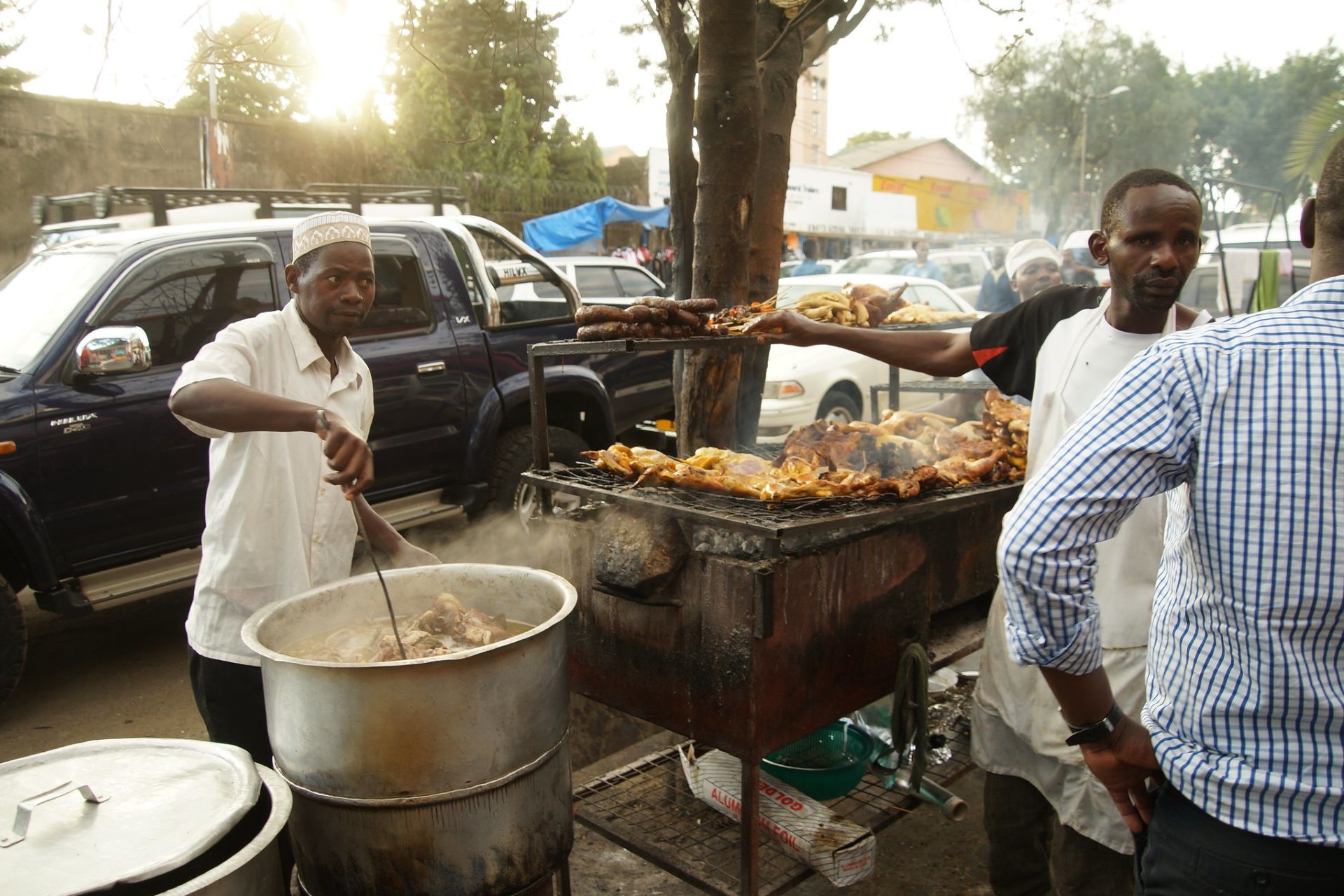Embark on a culinary adventure through Tanzania! This guide dives into the vibrant flavours and unique ingredients that define Tanzanian cuisine. From fresh seafood on the Zanzibar coast to hearty stews in the heart of the savanna, get ready to tantalize your taste buds and quench your thirst with refreshing local beverages.
Tanzanian Cuisine
Tanzanian cuisine is a vibrant tapestry woven from a rich blend of cultural influences and diverse culinary traditions. From the aromatic spices of Zanzibar to the hearty stews of the Maasai, the country’s food reflects its history, geography, and cultural diversity.
Tanzanian cuisine is characterized by its use of fresh, locally sourced ingredients, including an array of tropical fruits, vegetables, and meats. Staples like maize, rice, and plantains form the foundation of many dishes, while fragrant spices such as cloves, cardamom, and cinnamon add depth and complexity to the flavors. Across the country, communal dining is a cherished tradition, with meals often served family-style and shared among loved ones, fostering a sense of community and connection.
Traditional Tanzanian Dishes
In exploring the culinary delights of Tanzania, it’s essential to delve into the realm of traditional Tanzanian dishes. Before we embark on this gastronomic journey, let’s first acquaint ourselves with a table showcasing some of the most iconic dishes:
| Dish | Description | Key Ingredients |
| Ugali | A thick maize porridge, often served as a staple | Maize flour, water |
| Nyama Choma | Grilled meat seasoned with local spices | Beef, goat, chicken, spices |
| Grilled Fish | Fresh fish grilled to perfection | Fresh fish, local spices, lime juice |
| Mandazi | Sweet, deep-fried doughnuts | Flour, sugar, coconut milk, yeast |
| Chipsi Mayai | French fries mixed with omelette | Potatoes, eggs, spices |
Now, let’s explore each of these traditional Tanzanian dishes in more detail:
- Ugali: This ubiquitous dish is a staple in Tanzanian cuisine. Made from maize flour and water, ugali is cooked to a thick consistency and often served alongside meat stews, vegetables, or fish dishes. Its neutral flavor makes it a versatile accompaniment to a wide range of dishes.
- Nyama Choma: Translating to “grilled meat” in Swahili, Nyama Choma is a beloved Tanzanian delicacy. Various meats such as beef, goat, and chicken are marinated in a blend of spices, then grilled over an open flame until tender and succulent. Nyama Choma is typically enjoyed with a side of spicy sauces and fresh vegetables.
- Grilled Fish: With its extensive coastline, Tanzania is blessed with an abundance of fresh seafood. Grilled fish, seasoned with local spices and a squeeze of lime juice, is a popular choice among locals and visitors alike. Whether it’s tilapia, snapper, or kingfish, grilled fish offers a flavorful taste of Tanzania’s coastal cuisine.
- Mandazi: These sweet, deep-fried doughnuts are a favorite snack across Tanzania. Made from a simple mixture of flour, sugar, coconut milk, and yeast, mandazi are fried until golden brown and served piping hot. Often enjoyed with a cup of tea or coffee, mandazi are the perfect indulgence for those with a sweet tooth.
- Chipsi Mayai: A unique fusion of French fries and omelette, chipsi mayai is a popular street food dish in Tanzania. Slices of crispy fries are mixed with beaten eggs, seasoned with spices, and fried until golden and fluffy. Chipsi mayai is a satisfying comfort food that can be enjoyed any time of day.
Tanzanian cuisine is a true reflection of the country’s cultural diversity and culinary heritage, offering a tantalizing array of flavors and textures to tantalize the taste buds.
Popular Street Foods
When exploring the bustling streets of Tanzania, one cannot help but be enticed by the tantalizing aromas wafting from street food stalls. Here are some of the most popular street foods that are sure to tickle your taste buds:
- Mandazi: These delightful deep-fried doughnuts are a staple of Tanzanian street food. Made from a simple mixture of flour, sugar, coconut milk, and yeast, mandazi are fried until golden brown and crispy on the outside, yet soft and fluffy on the inside. Often dusted with powdered sugar or served with a drizzle of honey, mandazi are the perfect sweet treat to enjoy on the go.
- Chipsi Mayai: A beloved Tanzanian street food dish, chipsi mayai is a unique fusion of French fries and omelette. Thinly sliced potatoes are fried until crispy, then mixed with beaten eggs and fried together until golden and fluffy. Seasoned with spices and served hot off the griddle, chipsi mayai is a satisfying snack that combines the best of both worlds.
- Mshikaki: These flavorful skewers of grilled meat are a popular choice among street food enthusiasts in Tanzania. Cubes of tender meat, typically beef or chicken, are marinated in a blend of spices and grilled over an open flame until charred and succulent. Served piping hot with a side of tangy dipping sauce, mshikaki is a deliciously savory snack that will leave you craving more.
These are just a few examples of the delicious street foods that await adventurous food enthusiasts in Tanzania. Whether you’re craving something sweet, savory, or spicy, the vibrant street food scene has something to satisfy every palate.
Regional Variations in Cuisine
Tanzanian cuisine is as diverse as the landscapes that make up the country, with each region boasting its own unique flavors and culinary traditions. Let’s explore the regional variations in Tanzanian cuisine:
Coastal Influence: Zanzibar Cuisine
Zanzibar, often referred to as the “Spice Island,” is renowned for its vibrant and aromatic cuisine. Influenced by a rich tapestry of cultures, including African, Arab, Indian, and European, Zanzibari cuisine is a melting pot of flavors and spices. From fragrant pilau rice infused with cloves, cardamom, and cinnamon to tantalizing seafood curries bursting with coconut milk and fresh herbs, Zanzibari cuisine reflects the island’s rich cultural heritage and abundant natural resources.
Northern Flavors: Maasai and Chagga Cuisine
In the northern regions of Tanzania, such as Arusha and Kilimanjaro, you’ll find a different culinary landscape shaped by the traditions of the Maasai and Chagga tribes. Maasai cuisine is characterized by its reliance on milk, meat, and blood, with dishes like nyama ya ng’ombe (beef stew) and mursik (fermented milk) featuring prominently. On the other hand, Chagga cuisine emphasizes hearty stews made from locally grown grains such as maize and millet, as well as the use of indigenous herbs and spices to add depth and flavor to dishes.
Unique Beverages to Try
Exploring Tanzanian cuisine isn’t just about the food – it’s also about the refreshing and unique beverages that accompany the culinary experience. Here are some must-try beverages that capture the essence of Tanzanian refreshment:
- Tembo: This local beer is a staple in Tanzanian social gatherings and celebrations. Brewed from millet or sorghum, Tembo boasts a distinctive flavor that is both refreshing and satisfying. Whether enjoyed ice-cold on a hot day or paired with a hearty meal, Tembo offers a taste of Tanzania’s brewing tradition.
- Tangawizi: For those seeking a non-alcoholic option, Tangawizi is a popular choice. This fizzy ginger drink is both refreshing and invigorating, making it the perfect thirst-quencher on a sweltering day. Made from fresh ginger root, sugar, and sparkling water, Tangawizi is bursting with spicy-sweet flavor and is sure to leave you feeling refreshed and revitalized.
In addition to these beverages, Tanzania also offers a variety of fresh fruit juices, coconut water straight from the source, and locally brewed coffee that will tantalize your taste buds and quench your thirst.




